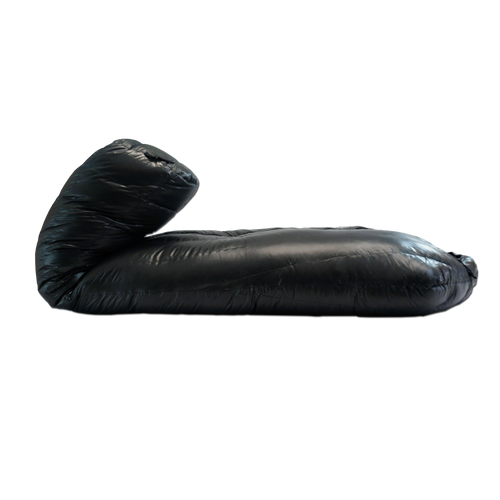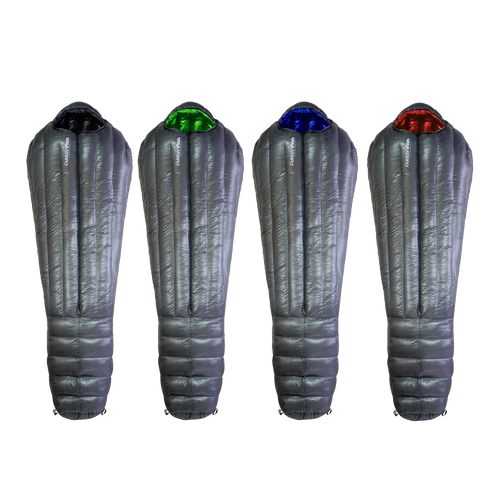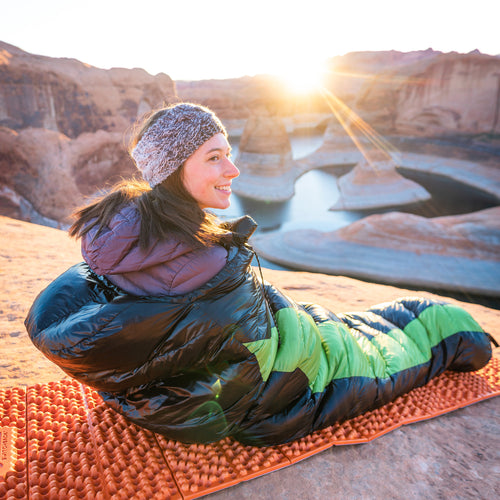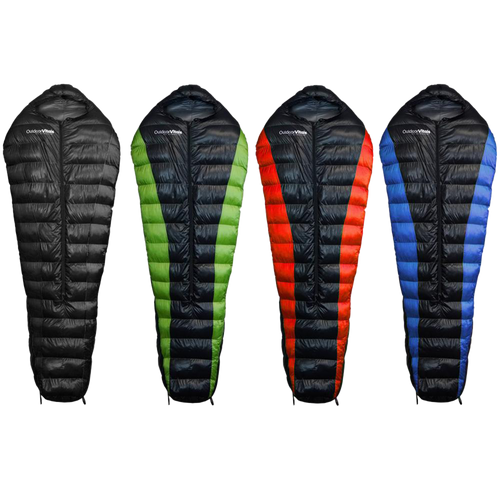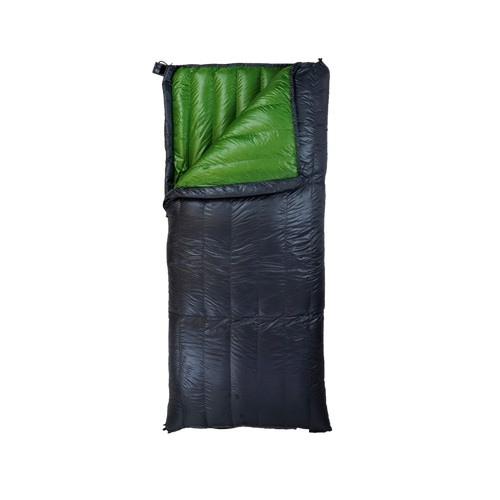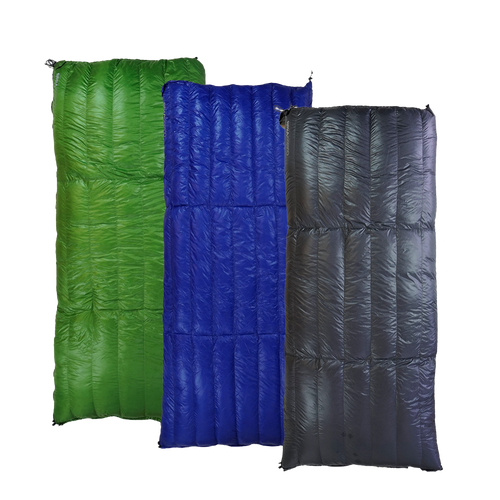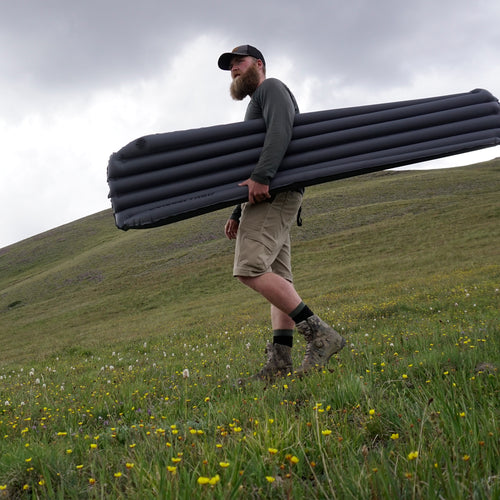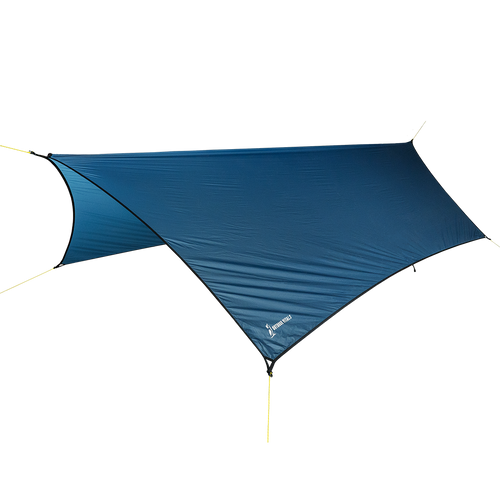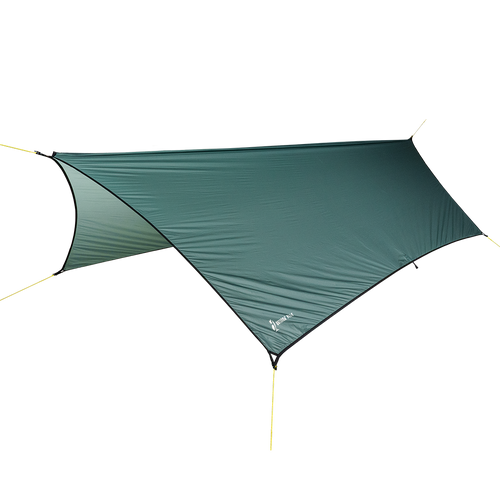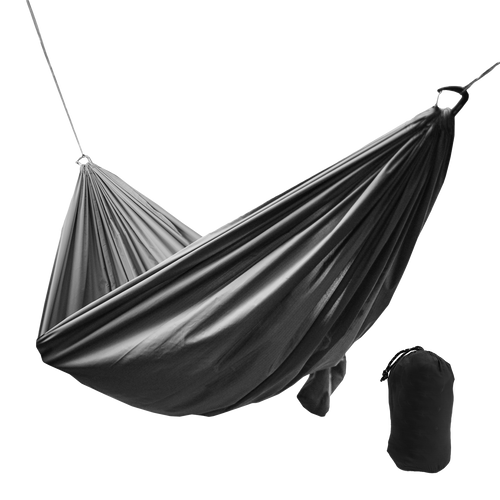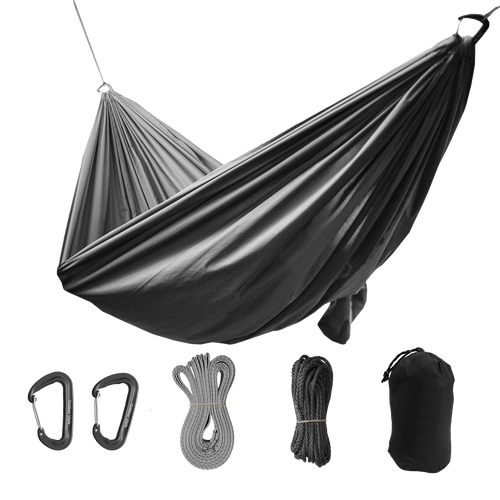3 Myths About Trekking Pole Tents
Trekking pole tents have been growing in popularity, but there are 3 MAJOR myths surrounding them that we need to talk about.
If you've been considering a trekking pole, it's likely that these myths have been giving you a fair amount of hesitation.
But you don't need to worry!
How Are Trekking Pole Tents Different?
Tons of backpackers are switching to trekking pole tents. Why? One reason is the ultralight weight compared to a traditional free standing style tent.
For example, our free standing Dominion 1 person Tent weighs 2 lbs 13.5 oz, while our Fortius 1 person Trekking Pole Tent weighs just 1 lb 9.4 oz!
This ultralight weight is possible in part because trekking pole tents do not require any tent poles.
Just whip out the same trekking poles you've been hiking with & use them to set up the tent!
Plus the tent body of a trekking pole tent will usually pack up very easily & take up minimal space in your backpack. What used to take up a huge percentage of your available packing space now only takes up a small portion (the Fortius can be compressed and pack down about as small as a 2 slice toaster!)
Now, I'm not advocating for everyone to just abandon free standing tents. I believe they both have their place & proper uses.
So what are the 3 most common myths surrounding trekking pole tents?
Myth 1: Not Suitable For All Terrain Types
It's easy to believe that a trekking pole tent won't work everywhere.
Since they rely on stakes to keep the trekking poles upright, terrain that is sandy, rocky, or snowy might seem out of the question.
However, think about it this way:
Say there's quite a bit of wind, & you've hiked to a pretty rocky campsite. Even a free standing tent will need to be staked in so that rain fly isn't flapping at night, or so your tent doesn't get carried away by a particularly strong gust. If the ground is impossible to put stakes in, you use large rocks to pin your guy-out lines and corners in place.
If that can be done for a free standing tent, it can be done for a trekking pole tent!
I have personally been able to pitch a trekking pole tent in 3 feet of snow, in desert sands, & in rocky campsites.
So for me, the idea that trekking pole tents aren't suitable for all terrain types is a myth! You can pitch a trekking pole tent almost anywhere that you can pitch a free standing tent!
But what about all weather conditions?
Myth 2: Not Good For All Weather Conditions
Without a built-in pole structure, trekking pole tents may seem like they would collapse easier in bad weather than a free standing tent.
While this may be true of poorly made trekking pole tents, there are many options that will hold up quite well in intense weather conditions!
Our team at Outdoor Vitals has been testing the Fortius Trekking Pole Tent for years as we've developed it. We've had it in the highest elevation blizzards, strong winds, torrential downpours, and everything in-between without ever having one collapse on us.
So how is that possible?
The design of a trekking pole tent is to put tension on the poles in such a way that will keep them upright and sturdy when staked in correctly. Additionally, tents like the Fortius have other guy-out lines or "storm points" that can be staked in to help reinforce the tent against wind or weather.
These storm points are basically extra lines on the paneling of the tent body that can be staked down or left alone as needed. On the Fortius, these lines are removeable so you don't have to worry about a whole bunch of extra strings hanging off your tent when not in use.
Now, there are limitations to what a trekking pole tent can handle, just like any other tent.
3 season tents (most tents) are not meant to handle excessive amounts of snow on the roof of the tent. But if all you get overnight is a couple inches, a well made 3 season tent should handle the weight just fine.
Myth 3: Not Quick or Easy To Set Up In The Field
This one is actually half truth, half myth.
If you don't know what you're doing, trekking pole tents can definitely be harder to set up. But if you do some simple things before your trip to prepare, then you'll definitely be able to set up your tent no problem.
Before you use a trekking pole tent for the first time:
-Make sure you set it up at home first! Get a good feel for how your tent works and feels.
-Watch a "how to" video or two to learn how to set up your tent most efficiently.
If you do these simple things, you should have no problem getting a trekking pole tent set up quickly.
A little bit of practice goes a long way.
Conclusion
So that's it! Those are 3 of the most common misconceptions people have about trekking pole tents.
Whether or not a trekking pole tent is right for you is still a personal decision. But if you're looking to decrease your backpack weight and free up some space, it's definitely worth your consideration!
At the very least, I recommend that you don't let these 3 misconceptions skew your decision.
To learn more, here's a video that goes over these 3 myths & other info on trekking pole tents:
As always, if you have any additional questions, please reach out to us at support@outdoorvitals.com & we would be happy to help!
5 comments
I have long used a silnylon tarp with my trekking pole as a tent. It has always worked well and is ultralight. However, a tent designed for this use would cut out uneccesary fabric and as they say, be better prepared for extreme weather. I’d give it a try!
I pitched my treking pole tent in deep snow, frozen ground, and on wooden tent platforms.
I 600 miles on the AT this spring and used a trecking pole tent, REI’s Flash one. I like it’s lightweight and compact size when packed away. And for a one man tent it was fairly roomy. The one feature I didn’t much care for was the fact that because it is a single layer tent it sweat quite a bit especially when it was raining and I found my self laying in a puddle much to often. Is there anyway to prevent this from happening?
I have always wondered why is not the go to approach! We are after all trekking with super strong “tent poles”!!
Great article. I’ve got an older Black Diamond BetaMid floorless trekking pole tent that I absolutely love! There ABSOLUTELY is a learning curve to them so practicing a few times at home is vital. I would recommend taking stakes appropriate to your hike as well. Softer ground…you need big stakes. In sandy areas, something else entirely.

